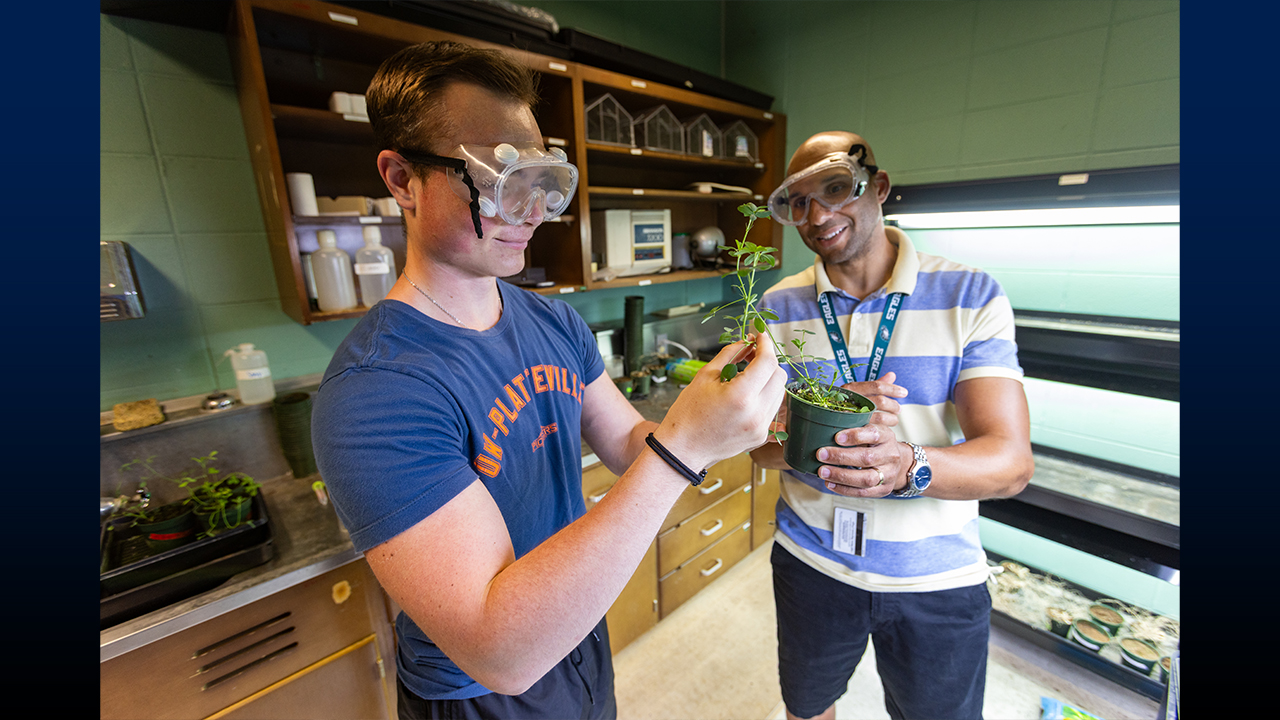
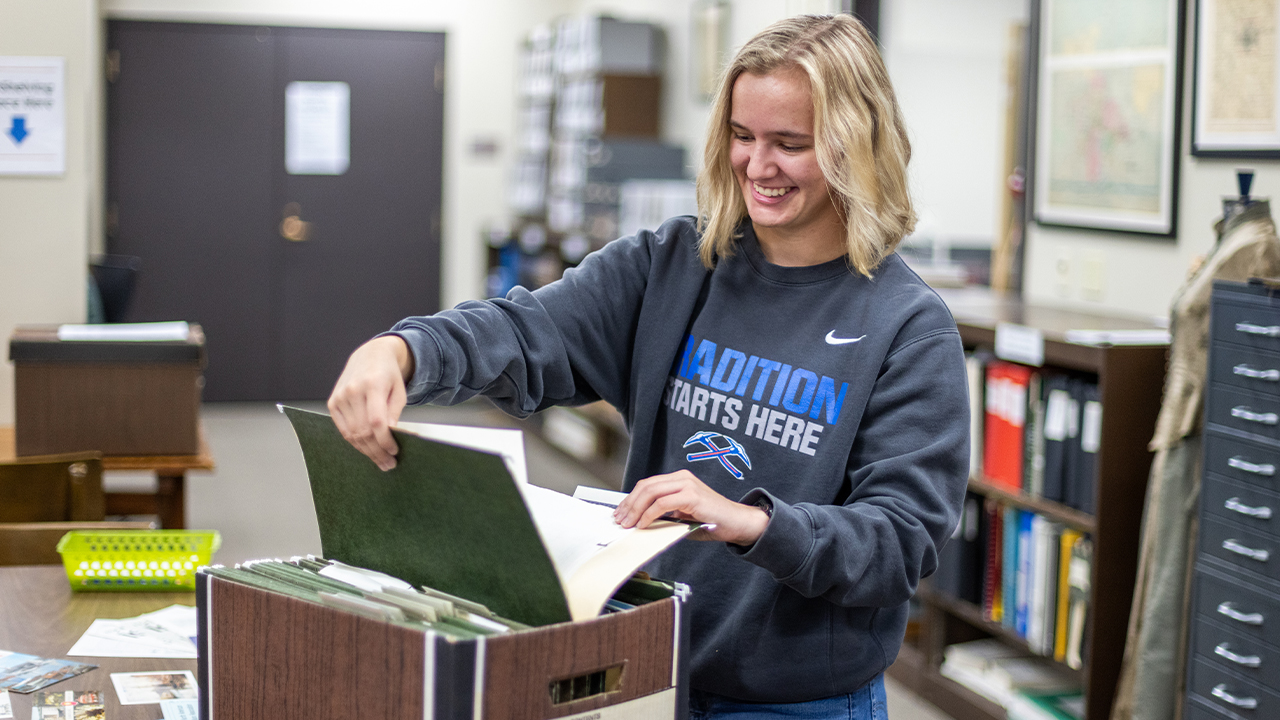
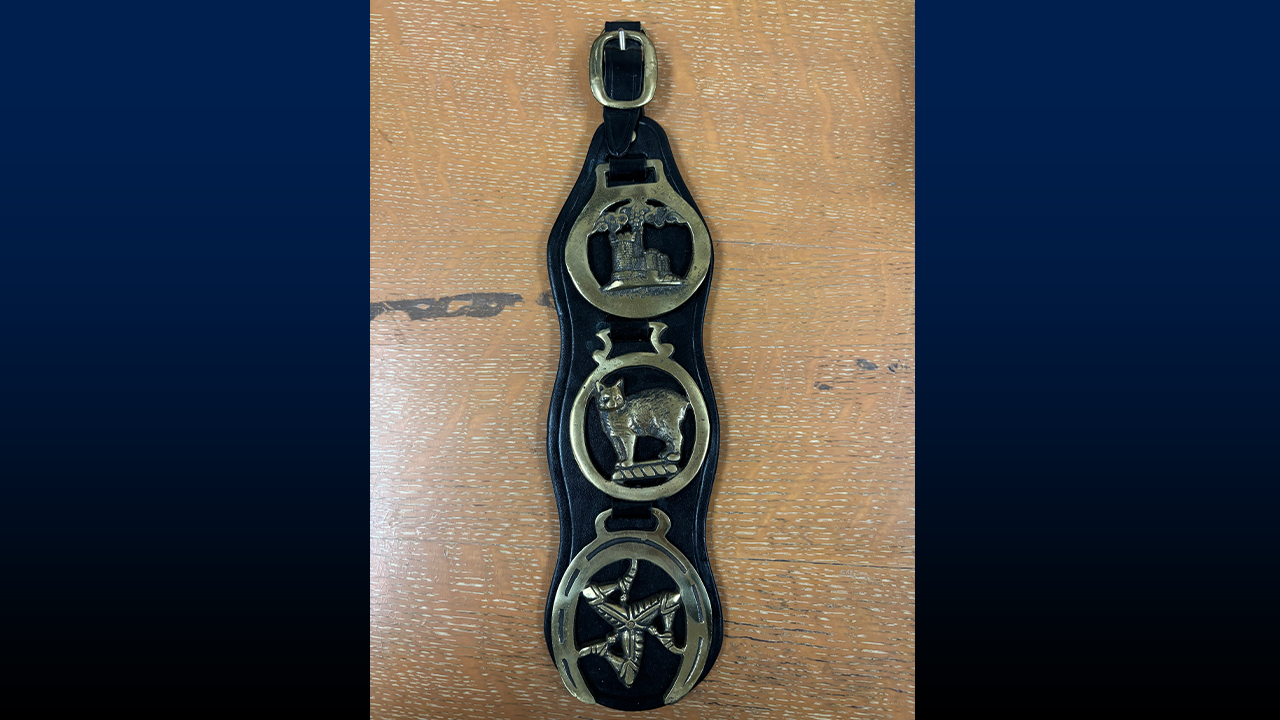
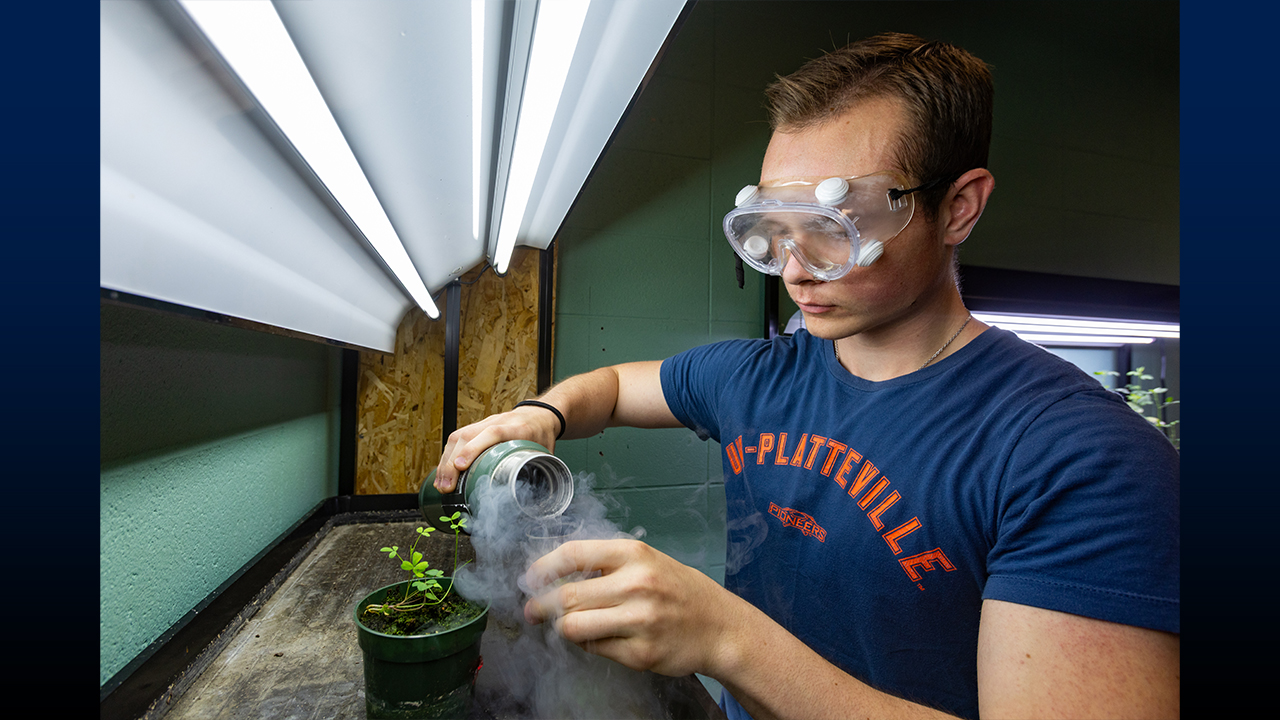
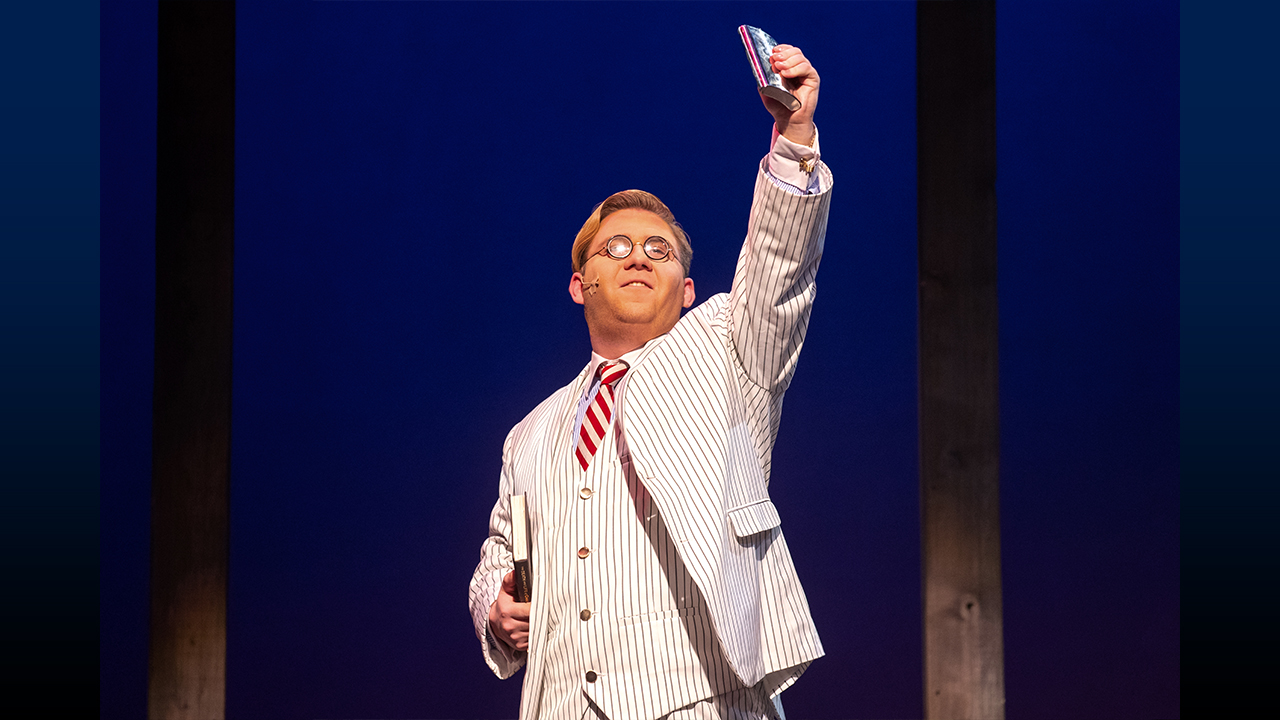
Where else can you find research projects in theater lighting design, improving alfalfa with seed priming and the preservation of decades-old artifacts from the Isle of Man all under one roof? At the University of Wisconsin-Platteville’s Summer Undergraduate Scholars Program (SUSP), that kind of academic diversity is exactly what’s celebrated. Now in its eighth consecutive summer, the program welcomed 10 students for an intensive eight-week research experience.
"It feels surreal. Only 10 people are selected for this scholarship, and I’m truly honored to be one of them,” exclaimed senior Ashten Wilson, a history major with an art history minor from Princeton, Illinois. “Being part of such a prestigious summer graduate scholarship program will hopefully help me stand out when I apply to graduate school for museum studies.”
With guidance from faculty and staff mentors, participants explored their academic passions through hands-on projects—supported by a $5,000 stipend and an additional $500 for project expenses. SUSP encourages full immersion, allowing students to focus deeply on their work while also building professional skills through weekly development workshops. From preparing for graduate school to learning how to communicate complex ideas to broad audiences, the experience goes far beyond the lab or archives. The summer concludes with a campus-wide showcase, where scholars present their findings over two days of presentations.
Revitalization of Luce Center Museum
Efforts are underway to breathe new life into the Luce Center Museum. Wilson, a student researcher, is engaged in the "Revitalization of Luce Center Museum" initiative, which involves cataloging and updating years' worth of mostly uncategorized materials. Her work is not only preserving history but also shaping the future of the archive.
“When people think of an archive, they may think of dusty books, but we’re fortunate that our archives are connected to an exhibition space,” said Dr. Melissa Gormley, chairperson of the History and Social Sciences Department and history professor. “Ashten is the perfect person because she’s worked at the Mining & Rollo Jamison Museums here in Platteville, so she’s got the skills to work in that kind of space.”
Wilson’s work is reaching far beyond the years she’ll spend on campus. UW-Platteville serves as an Area Research Center for the Wisconsin Historical Society and maintains important relationships with the Wisconsin Manx Association and the Manx Society of Minnesota—both organizations dedicated to preserving and celebrating Manx culture.
“In addition to her work on cataloging the Manx Collection, Ashten is also working with the archivist to draft a deaccession policy,” explained Gormley. “So, if we decide not to keep something, what is the process we must go through? Do we return it, donate it, or pass it on elsewhere? We also want to ensure our holdings are well-preserved and up to date.”
Wilson has been involved in inventory and cataloging work at the Luce Center. She is currently helping sort through older text materials, including bulletins, pamphlets and yearbooks, one of which is about 100 years old. Her work also includes labeling and organizing boxes of both marked and unmarked items, ensuring they are properly identified and preserved. One of her favorite discoveries so far has been a mesh dress, likely from the 1960s, a striking reminder that someone thoughtfully collected and donated these pieces of history to be shared and protected. It’s a reminder that continues to inspire the work she contributes each day.
"Someone took the time to write these books and preserve them—some dating back to the 1920s, ’30s, ’40s and ’50s,” shared Wilson. “My work will eventually benefit the Luce Center and help the university properly archive more items, keeping them protected in a sealed, controlled environment instead of being exposed to the elements."
The research Wilson is doing feels deeply rooted in her identity. Her 81-year-old grandmother, Sharon, has kept a journal throughout her life and often shares stories from the past. Wilson sees this path as a natural extension of her upbringing. She is also a third generation, living member of the Daughters of the American Revolution.
“For me, it didn’t start in college—it’s been all around me for my entire life,” Wilson said.
Using Seed Priming to Improve Alfalfa Feed Quality and Value
This project offers a hands-on research experience with real-world significance, especially for agriculture and the dairy industry. Junior Landen Beaumont became involved in the alfalfa seed priming project because of its unique blend of plant science, sustainability and agricultural impact.
“By exploring ways to enhance alfalfa, a key livestock feed, Landen contributes to improving both farm productivity and environmental sustainability,” said Dr. Raymond Pugh, assistant professor of chemistry at UW-Platteville. “Throughout the project, he engages in essential lab techniques like sample extraction, gel electrophoresis, spectrophotometry and data analysis, gaining technical skills in biochemistry and cell biology.”
The process requires persistence and problem-solving, as experiments may not always go as planned. However, through this experience, Beaumont is building resilience and developing a deep understanding of the research process.
"I was drawn to this project because it combined plant science with real-world applications in agriculture and sustainability,” said Beaumont from Green Bay, Wisconsin, who is double majoring in chemistry and biology. “What surprised me most is how much troubleshooting and flexibility research requires—experiments rarely go exactly as planned. But through that process, I’ve developed critical lab skills and a strong work ethic that I know will carry over into whatever academic or career path I pursue.”
This research has the potential to enhance alfalfa production and resilience under environmental stress, promote more sustainable agricultural practices by reducing the need for synthetic fertilizers and pesticides—since alfalfa naturally enriches the soil and helps control pests and disease—and increase the profitability of both farming and the dairy industry by lowering production costs and improving milk quality through higher-quality feed.
“My favorite part has been watching the biochemical data come together to tell a meaningful story about how plants and crops respond to drought stress,” recalled Beaumont.
Lighting Design for William Shakespeare’s Play “A Midsummer Night’s Dream”
When offered the opportunity to design the lighting for the fall 2025 production of “A Midsummer Night’s Dream,” it was an easy “yes” for senior Jamie Wodack, who is a theatre major from Fond du Lac, Wisconsin. When Professor Jeffrey Strange encouraged him to apply through SUSP, Wodack knew it was the perfect chance to take his vision to the next level. The blend of Shakespeare’s enchanting storytelling and the chance to visually shape that world through light was too exciting to pass up for his research project.
“I have been able to interpret this piece by creating a stark contrast in the lighting between the setting of Athens and then the setting of the fairy world in the forest,” explained Wodack. “The lighting for Athens is going to be very minimal and stark with not much color or dimension to represent some of the oppressive nature in the play. In contrast, the magical, dream-like forest is going to be full of color and excitement. My design has many lights positioned in a way to emulate a rainbow of foliage on the ground to make the forest feel magical and exciting.”
Reflecting on the experience, he shared how meaningful the SUSP opportunity has been both personally and artistically. Not only did the workshops offer valuable professional development, but the dedicated time for in-depth research deepened his understanding of both the play and lighting techniques. The experience has prepared him for future graduate school applications—and has brought his artistic vision for “A Midsummer Night’s Dream” to life in a way he’s truly proud of.
“This program has helped light a fire in me and propel my passion of lighting design,” said Wodack. “SUSP further solidified for me that this is what I want to do with my life, and this is that path I want to take. I am so honored to have had this opportunity and so excited for what comes next in my lighting design journey!”
More than just a summer scholarship, SUSP is a guiding light that helps illuminate the paths these students are carving toward their futures, one discovery at a time.
“This program is super representative of how we support our students,” Gormley said. “We have strong graduate programs, but our focus here is our undergraduates. So, giving our undergraduate students research programs experience like this, regardless of the discipline, sets them up for success in the future.”
2025 SUSP student scholars and mentors:
Ashten Wilson and Dr. Melissa Gormley: “Revitalization of Luce Center Museum”
Jamie Wodack and Jeffrey Strange: “Lighting Design for William Shakespear’s Play A Midsummer Night’s Dream”
Zareen Hassan and Dr. MD Mamunur Rahman and Dr. Vettribrl Gnanwswaran: “Assessing the Environmental Impact of Electric Vehicle Adoption Amid Shifting U.S. Energy Policies”
Connor Gresens and Dr. James Hampton: Increases in FGF21 are Associated with Formation of Ovarian Follicular Cysts in Lactating Dairy Cows”
Landen Beaumon and Dr. Raymond Pugh: “Using Seed Priming to Improve Alfalfa Feed Quality and Value”
Morgan Hurda and Scott Steder: “Experimenting with Color: Formulating Safe and Effective Ceramic Materials for Art Education”
Carley Nehls and Dr. James Hampton: “Early Postpartum CIDR Treatment to Encourage Cyclicity in Dairy Cows”
Gabriella Caruso and Dr. Eugene Tesdahl: “The Treaty of Prairie du Chien 1825: Two Hundred Years of Complexity, History and Tribal Sovereignty”
Luke Diljak and Dr. Gokul Gopalakrishnan: “Microscale Fiber Alignment in Composite 3D Printing”
Riley Mohr and Dr. Raja Maunnamalai: “Quantitative Structural Analysis, Molecular Docking Studies and Synthesis of New Abscisic Acid Analogues”